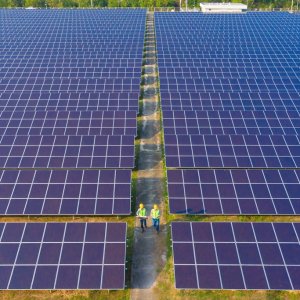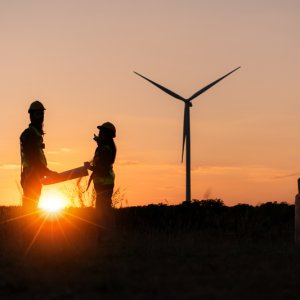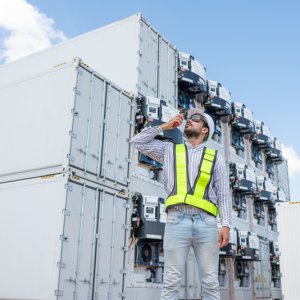
UK Trial Attempts to Solve Wind Power’s Underlying Issues
 By Cas Biekmann | Journalist and Industry Analyst -
Fri, 10/02/2020 - 09:09
By Cas Biekmann | Journalist and Industry Analyst -
Fri, 10/02/2020 - 09:09
GreenTech Media (GTM) reports about a trial in the UK, where a single wind turbine is testing a construct that could be able to diminish strain on the grid and avoid wind operator costs for ramping back the energy. If successful, the concept could be applied at a much broader scale.
The Concept
The tests, which started in September by utility Centrica, are taking place in Cornwall. In this area located in the Southwest of England, a single 2.3MW Enercon turbine has been installed to power 1,500 households and test the concept. Cornwall poses an interesting situation in the UK’s grid: due to its renewable energy potential, plenty of renewables were installed. Yet the constraints in the local grid meant that since 2016, no further wind turbines have been installed.
Wind energy, for all its benefits, does represent an issue for traditional power grids. Wind energy is intermittent, because wind speeds might vary throughout the day and drop significantly at night. Moreover, wind energy is not as easily increased or lowered when demand changes. To incorporate a high amount of wind to the grid, certain adaptations need to be made, which countries such as Denmark have done successfully.
But strengthening the grid itself is a costly process, more so in those that have older grids, such as Mexico. Centrica aims to decrease the strain of its renewables on the local grid instead. A single Enercon E82 E4 turbine is being equipped to smooth out its peaks. Dan Nicholls, Program Manager for the Cornwall electricity market, explains why this turbine is specifically suited for this purpose. “It is gearless and it is a variable speed turbine, which are the key characteristics that allow it to ramp very fast. It can decouple from the AC frequency of the grid, then reset the frequency in alignment with the grid’s frequency,” Nicholls said in an interview with GTM. A fast, responsive control unit to decrease response time is a further crucial element to the test.
When too much renewable energy is produced, grid operators often ask renewable operators to curtail their output. This is a costly process, for which renewable project owners are not compensated. By being able to balance the network instead, owners of smaller wind farms can now turn this into a profitable service. Before this point, similar technologies were only available for large-scale wind farms.
A Solution for Mexico?
Being able to balance wind energy output for smaller and larger wind farms alike would be a boon for Mexico’s grid as well, which has traditionally struggled with the incorporation of renewable energy. Part of CENACE’s and SENER’s measures earlier this year directly addressed the strain that renewable energy put on the grid in times of the pandemic. Nonetheless, the government’s approach toward renewable energy incorporation is much more complex, marked by what it considers to be grievances in the past and too big a role of private producers. Benigno Villareal, Director General of Vive Energía, outlined this situation in an interview with MBN earlier this year. “What concerns me is the message that the government is sending: it does not favor renewable energy, private competition, or the legality of preexisting contracts. It is hard to convince international third-party investors that lawsuits can be won. Instead, these investment groups will look to different countries where additional legal certainty exists,” he said.
















